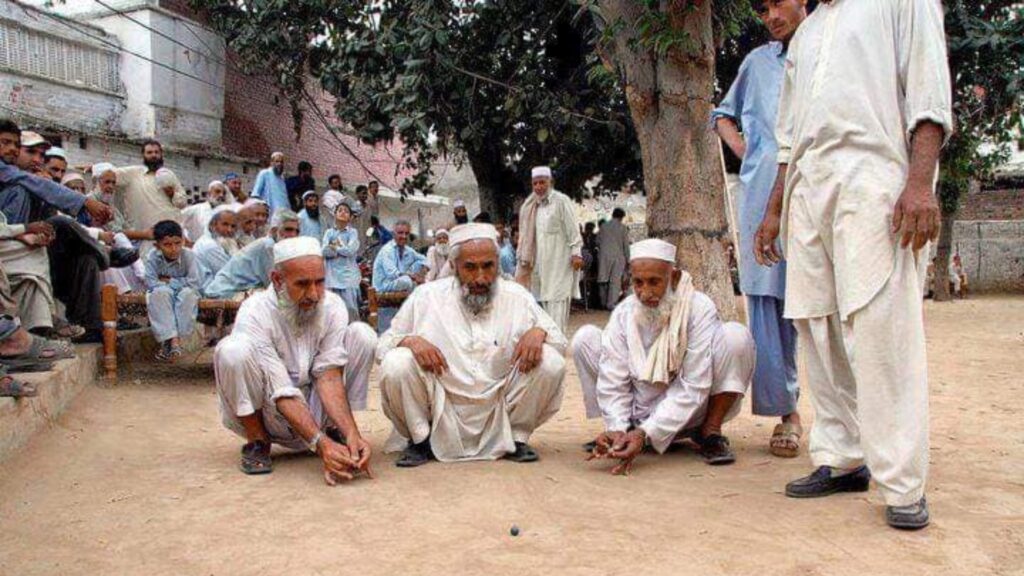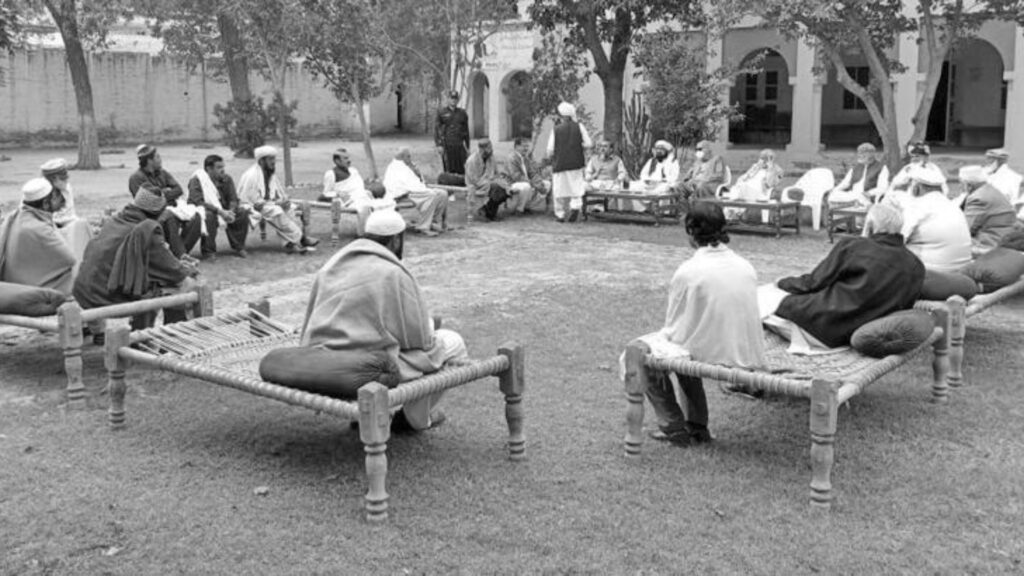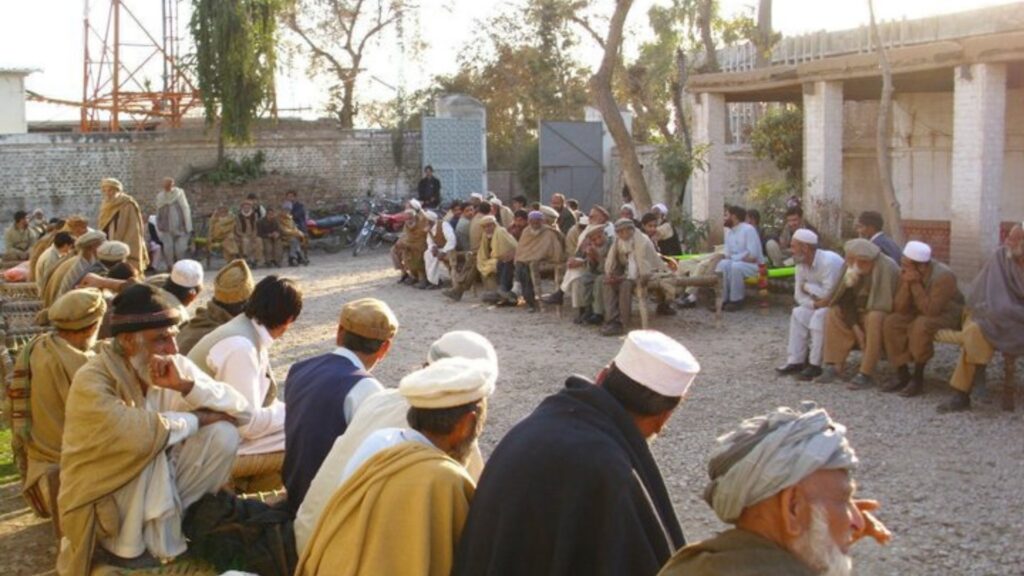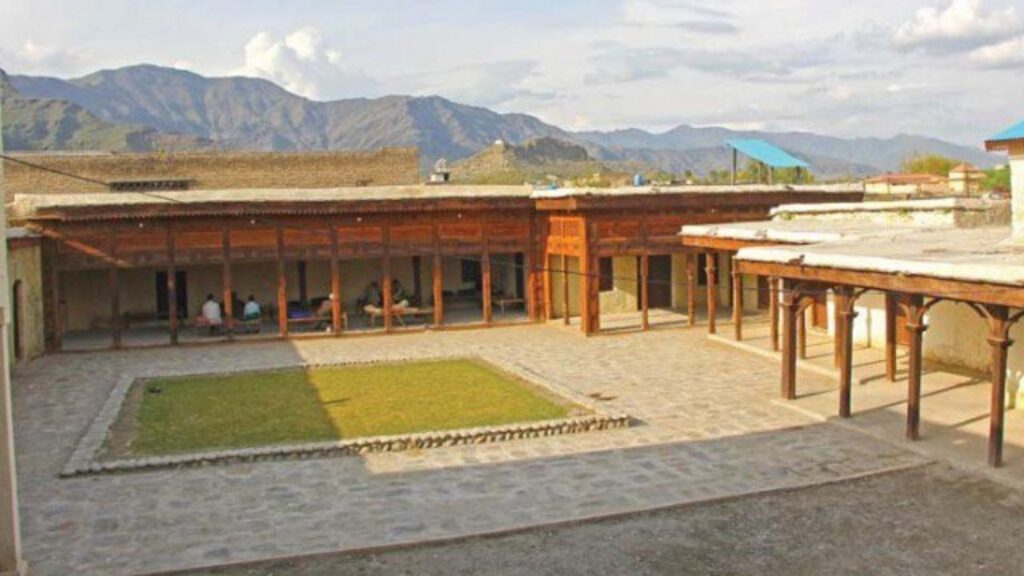Hujra (The Indigenous Community Center)
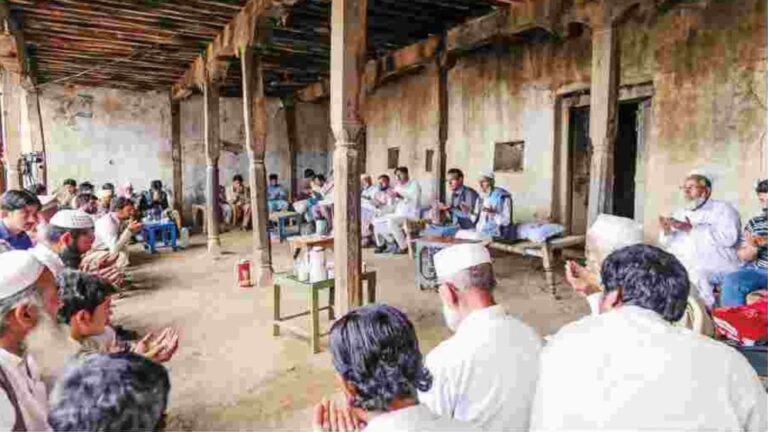
There are three important institutions in the Pukhtoon community where a male Pukhtoon child gets an education The Mosque is for receiving religious education. The school is for receiving worldly education. The Hujra is for learning about the Pukhtoon code of life, called azizwali/Pukhtoonwali. The Hujra is similar to a present day community centre. All of these are open to men but not women. The Pukhtoon child gets an education in three disciplines as compared to other nations of the world community, where two institutions are mostly used for the education of the children. Schools are most commonly for worldly education and the Mandar, Church, synagogue, Mosque is for religious education. A Pukhtoon child, apart from religious training in the mosque and worldly training in the school, gets a unique verbal and unwritten knowledge in the Hujra about Pukhtoonwali. The children learn from elders, called Masher, while youngsters are known as Khashar. Taking apart the word Masher in Pustho: Ma is used for no, Sher means violence, so Masher are those who prevent or stop violence and conflict. Ka in Pustho means doing, so ka -sher means the one who goes after violence and conflict. The elders are considered the traditional leaders while the modern world considers the politicians to be the leaders of a community (My own Interpretation). Sometimes Mashar and Khan are considered synonyms but actually they have different meanings. Mashar is an elderly wise and credible man on whom the Qaum (tribe) has trust. He is expected to have proved his worth through the thick and thin of life. He is expected to keep himself aware of the situation of the community or Qaum and keep his eye on the good and the evil in vogue. He gives his approval or disapproval of the prevailing patterns of the society and if he considers it appropriate, he refers the issue to a council of elders for their intermediary role.
The name of the Hujra (community centre) and the Jumat (Mosque) are simultaneously used in the Pukhtoon community, while Hujra is also linked with the Jirga. A community is not complete in the Pukhtoon culture if they have not these three entities: Hujra, Mosque and Jirga. The Hujra is a communal setting for entertainment, a community centre for children to play, a decision-making conflict resolution centre, a place to offer people workshops in various skills, a place for ceremonies and celebrations in the event of deaths, marriages, festivals, and a communal “hotel” and guest hall with a big compound for males in the community or village. The community members make contributions and provide the physical labour, called Ashar, to construct the Hujra on the land that belongs to each individual of the community called shamalat. Visitors and unmarried young men sleep in the Hujra. The villagers usually share the expenses. The Hujra plays a pivotal role in Pukhtoon daily life. It serves as a club, dormitory, guesthouse and a place for rituals and feasts. It is a centre for social activities as well as a Council Hall for the settlement of family and inter-tribal disputes. The Hujra is not only a meeting place for the villagers but is also used as a platform for the Jirga’s meetings (grand community meeting) where important decisions are made and family quarrels and tribal disputes are cordially resolved. It is a guesthouse where guests are jointly entertained by village folk and a community centre for marriages and other social functions. Even condolences are offered in the Hujra on the demise of a person and here sympathy is expressed to the bereaved family. It is a place of public resort where village elders and youngsters get together in their leisure hours to discuss tribal, national and international affairs and matters of mutual interest. The guests and strangers are fed and sheltered free of cost in the village Hujra. The Hujra and the Jirga are interrelated. The Hujra is not only a meeting place for the villagers but it is also used as a platform for the Jirga’s meetings where important decisions are made and family matters and tribal disputes are amicably resolved. In some places the Hujra happens to be the property of one man but in tribal areas it is common property. In the Hujra, the Hubble bubble (Cheelam) and the Rabab (ancient guitar) and the Mangia (an earthen pitcher) are always played together. Though the Hubble-bubble still retains its old place, the music of the Rabab with the accompaniment of the Mangai is vanishing and is being replaced by the radio, transistor and television. Before the appearance of these modern technologies, story- telling in a melodious voice by a community member was one of the common practices. On certain occasions music with a woman singer was arranged by the family for the celebration of a marriage etc. The Hujra are generally well fortified. They have one or two towers with a loop-holed bulwark for the purpose of the defense of the village and shooting from above along the wall in case of an outbreak of hostilities. The youngsters of the village and unmarried men sleep in the Hujra to guard the village in case of blood feuds. The Hujra usually consists of two or three rooms with an adjacent veranda and a courtyard. A number of bed stands or charpayee, pillows and quilts and prayer rugs are available in the Hujra for the guests. The Hujra’s use is multipurpose as mentioned above. The elders stay in the Hujra when the villagers leave for work. They not only discuss the village affairs but also keep an eye on the visitors and newcomers. They entertain them and assist them in all respect. They offer guidance to beginning itinerate merchants, called Banjaree, who sell small items or cloth. They also collect taxes from the people and oversee the collection of stones from the hill, sand from the stream and other activities that generate village revenue. They respond to emergencies in the absence of the youth and other family elders and arrange to look after the sick. They sit in the Hujra until lunch and afternoon prayer. The second shift starts when the children leave school to eat lunch and go to the Hujra for games. After two or three hours the carpenters, blacksmiths, shoemakers, barbers and other skilled workers come to the Hujra and do their community jobs. These are compensated for their work after the harvesting of the crop with a special share according to the Narkh (existing prices) by each individual of the community. The Dam (in some communities called Nayee) are always present to keep Hujra clean, entertain the locals as well as guests with the Hubble bubble, serve tea, food and drinks and provide other formalities as needed. The elders and youth look after the poor, disabled, sick and elderly of the community. The physical assistance is carried out by the youth and the financial assistance of treatment, daily food, entertainment is looked after by the elders of the community. The elders also maintain all the services and items that community needs i.e. tools for repair, graveyards, tents, funeral equipment, beds, quilts and blankets, crockery, cooking utensils, etc. Similarly they maintain the arms and ammunition in the community in case of any security threats to the community. Furthermore, the elders stay current with the situation of relatives and friends of each family in other areas and are informed in the case of a death of any family member. The electricity bills of the Hujra and mosque, and even of some poor families, are paid from the community savings. Due to a joint family system the unmarried youth use the Hujra as a bedroom and all arrangements are made by the elders for their needs. The last session at the Hujra is for the youth and elders together. Elders soon after the night prayer join the youth for an updating and discussion of issues. After awhile the elders leave and the youngsters can enjoy their own company. In the Hujra each Kashar (youth) is a volunteer who works for the elders and guests. They are involved in providing food, helping the elderly, looking after the village and community security, making arrangements for funerals and happy occasions and celebrating religious and traditional festivals. The youth are not involved with fundraising and gathering contributions from the villagers since this is the duty of elders. There are common places like the desert, hillsides and graveyards where community members gather sand, stone and wood for their use. Villages have special taxes on such items, which they collect from the user and this becomes part of the village revenue. Small merchants such as egg sellers (ageemar), sellers of small items for children and of makeup for women (banjaree), cloth sellers, fruit and vegetable sellers also pay to the village on each visit. Similarly the village servant pays a special contribution on Eid festivals for the village and community betterment. If the community needs further resources for specific projects then the contribution is taken from each household. Poor families are exempted and the contribution is usually taken from each married male head-of-household. Women and children are exempted from such financial liabilities. The money is kept with the elders of the Jirga, who share the information on the expenditures and income with the community after Friday prayer in the mosque. If someone needs further funds clerification he can contact the elders at the Hujra. Each community has their own system of distribution and skilled personnel to meet the needs of the community and these receive compensation in the form of food grains when the crops are ready. The landless poor, the disabled and the elderly are assisted without compensation. Story telling was an important component of the Hujra. A famous man from the surrounding area was invited to narrate the story of love, bravery, pukhtoonwali to the youth of the Hujra. The elders sometimes also attended these special sessions. Story telling with traditional guitar (Rabab) and Pitchers was another way of presenting the information to the youth. These stories sometimes lasted two or three nights and the people not only enjoyed the singing but also the enactments of the songs done by the youth at the direction of the presenter. Such stories were also recited by the youth and practiced in the Hujra or during the Ashar (harvesting time of the crop). With the passage of time and the arrival of electricity story telling changed to the use of the gramophone, radio, and TV. Since TV is such an all-encompassing visual and auditory experience, people started to leave the Hujra culture and watch their TVs alone at the Batak (the drawing room adjacent to the home) and in their homes.
